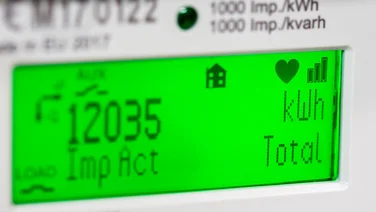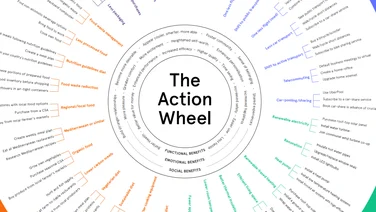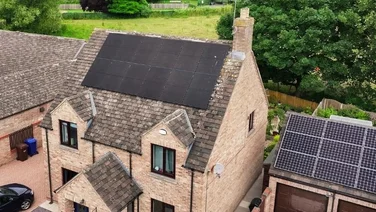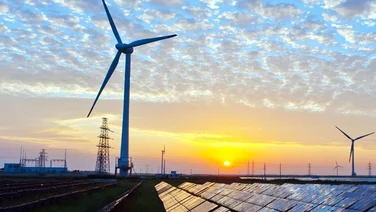The UK is leading the charge on building floating offshore wind farms.
Most wind energy in the UK comes from offshore wind farms. In the last quarter of 2023, offshore wind accounted for over 14% of electricity generated in the UK, the largest percentage of any renewable. By contrast, onshore wind accounted for just 7%.
Together, onshore and offshore wind farms produce around 22% of the UK’s electricity, thanks, in part, to our island status and the wind that swirls around us. For example, as Storm Pia battered the country in the lead up to Christmas, wind farms produced around 56% of the UK’s electricity a single day.
The country is now trying to tap into more of wind power’s potential by setting up floating wind farms.
With its two pilot projects off the coast of Scotland, Hywind Scotland and Kincardine wind farm, the UK already accounts for over a third of the global floating wind farm capacity. These projects have a combined capacity of 80 megawatts (MW), according to the Financial Times.
Additionally, several new projects – accounting for one-fifth of the global planned projects – have been approved, according to Renewable UK. They have a combined capacity of 37 gigawatts (GW).

Why does the government want to build more floating wind farms?
Floating wind farms have the potential to produce more energy than standard offshore farms.
This is mainly because floating wind turbines can sit much further out to sea than standard offshore turbines. Floating wind turbines are built on floating platforms anchored to the seabed, while standard offshore wind turbines are fixed to the seabed, so they can’t be installed in very deep water.
This means floating wind turbines can take advantage of the strong winds that occur further out to sea, and generate more power than wind turbines closer to shore.
Wind turbines already produce a lot more energy per square metre than other renewables – they operate at around 60% efficiency, compared to 20% efficiency for solar panels. Maximising the amount of wind that turbines are exposed to could significantly increase the UK’s share of green energy.
The only problem is, floating wind farms are very expensive to build, which means projects almost always require government support.
Government involvement in floating offshore wind
The UK government set a target of having 5 GW of floating offshore wind capacity by 2030 in its April 2022 British Energy Security Strategy. That’s over 60 times the current capacity.
It has set up several public funds and schemes to encourage investors, including the Contracts for Difference scheme (CfD), a support scheme for low-carbon energy developers that offers them a set price for the electricity they generate. The idea is to encourage investment in expensive, long-term energy projects by guaranteeing them a stable source of revenue.
However, it’s not all been smooth sailing. In September 2023, the government didn’t get any bids from investors in round five of the CfD Auction for the first time since the scheme began.
Catapult Offshore Renewable Energy, a UK technology innovation research centre, put this down to the CfD scheme no longer being generous enough, after the onshore wind industry experienced higher inflation than the rest of the UK economy.
The parameters have been changed for the first CfD auction round of 2024, so with any luck some investors will take the plunge this year.
Despite these growing pains, the UK renewable industry isn’t doing too badly.
Renewables produced enough energy to power every UK household in 2023, according to the Energy and Climate Intelligence Unit (ECIU). 90 terawatt hours of energy were generated over the course of the year by wind, solar, and hydro plants.
This was one of the many environmental milestones of 2023, and one that will hopefully be beaten in 2024.






